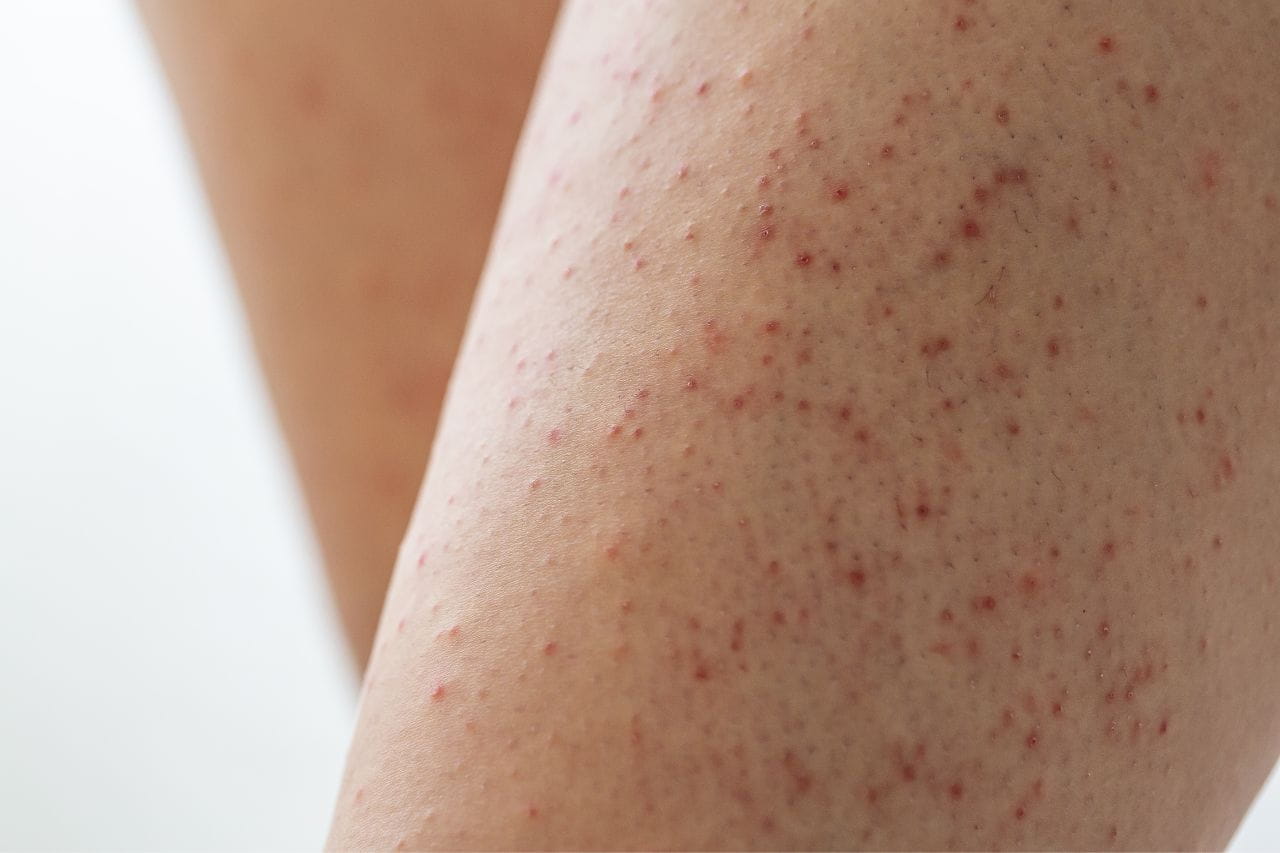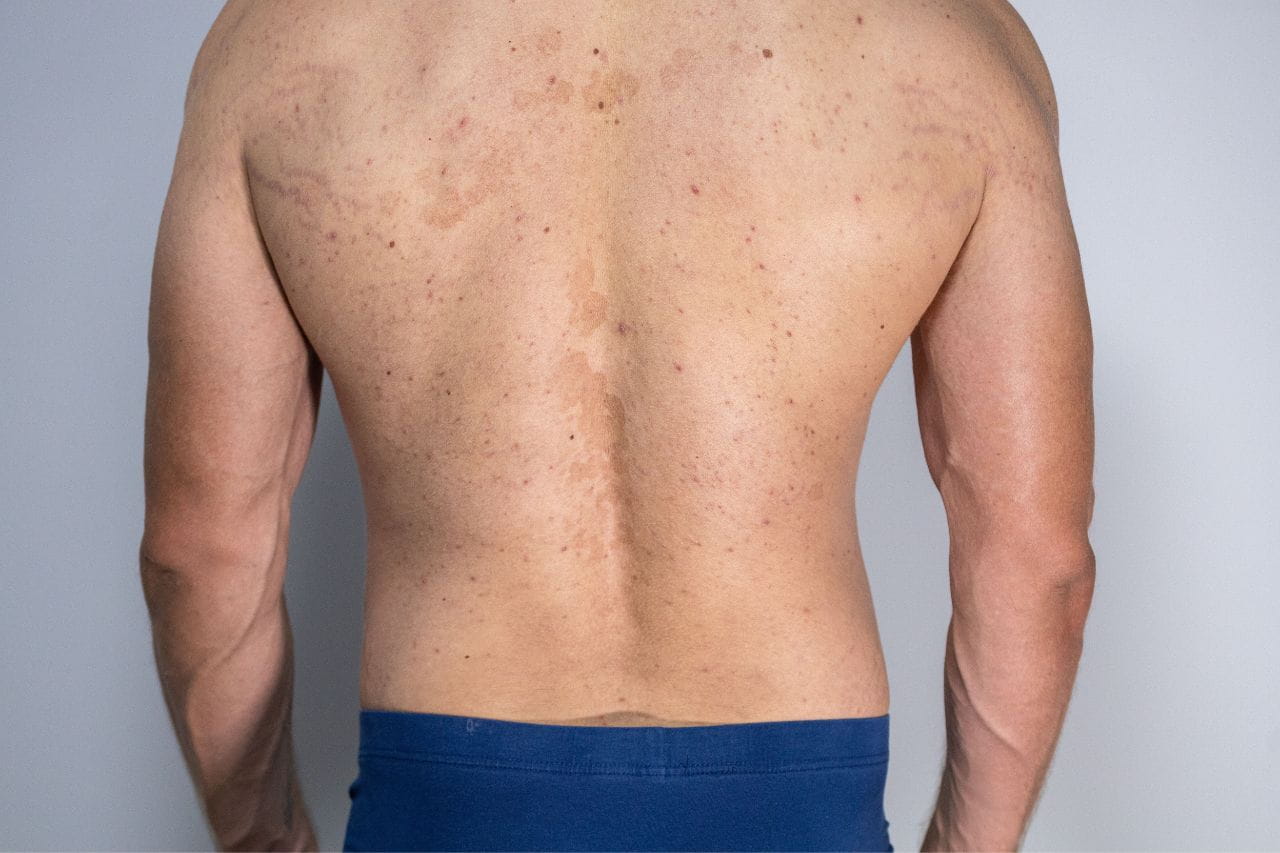Keratosis Pilaris

Also referred to as chicken skin or KP, keratosis pilaris can develop anywhere on the body but is most often found on the cheeks, upper arms, thighs, or buttocks. The condition is common, with approximately 40% of adults and 50% to 80% of teenagers experiencing it.
Keratosis Pilaris Symptoms
KP produces rough-feeling patches of skin. The bumps within these patches can be white, brown, or red. Essentially tiny pimples, they aren’t itchy or uncomfortable, and the condition is not contagious.People with KP may notice slight redness of the skin around the bumps. And while the bumps themselves don’t itch, the condition is often associated with dry skin, which can itch.
What Causes Keratosis Pilaris?
KP occurs when keratin blocks skin pores. The blockage affects hair follicles, causing inflammation. If you were to scratch open a KP bump, you might see a tiny hair emerge.
Researchers don’t know why some people develop KP. However, they speculate it may be associated with genetic diseases and skin conditions like atopic dermatitis. There may also be a link to vitamin A deficiency.
You may be more likely to experience KP if you have the following:
- Fair skin
- Dry skin
- Eczema
- Ichthyosis (a group of conditions that produce scaly, dry, thickened skin)
- Obesity
- Diabetes
- Hay fever
- Cushing’s syndrome
- Down syndrome
How Is KP Diagnosed?
Doctors diagnose keratosis pilaris simply by examining the skin. The condition has easily identified characteristics, so additional testing usually isn’t necessary. However, if your doctor isn’t sure you have KP, they may order allergy testing or a biopsy.How to Get Rid of Keratosis Pilaris
Keratosis pilaris typically resolves on its own, becoming less noticeable by the time you’re 30. It also may subside somewhat in the summer and then return in the winter.
If the look or feel of the bumps bothers you, moisturizers, creams, and other skin care products may reduce your symptoms. In addition, taking steps to avoid dry skin can be helpful. This includes:
- Showering or bathing in warm versus hot water
- Taking shorter showers or baths
- Exfoliating your skin (gently removing dead skin cells and dirt)
- Moisturizing your skin regularly
- Drinking plenty of water to stay hydrated
- Using a humidifier
You can also get laser, microdermabrasion (intense exfoliation), or chemical peel treatments from a dermatologist to reduce KP symptoms. In addition, they may prescribe retinol creams.
Some people use home remedies, like applying apple cider vinegar or baking soda to the skin as an exfoliant or moisturizing with coconut oil. However, you should use caution as these and other remedies may cause allergic reactions.
While KP treatment can reduce symptoms, it can take up to six weeks to see results.
Keratosis Pilaris and Gluten Intolerance
Gluten intolerance can cause a skin rash that looks like KP. However, there’s no evidence that gluten intolerance causes KP.Talk with Your Baptist Health Doctor About Keratosis Pilaris
If you suspect a skin problem is keratosis pilaris and want to discuss treatments, contact your Baptist Health primary care physician or dermatologist. They can diagnose your condition and advise you on the best treatment.It’s especially important to talk with your provider if your keratosis pilaris is adversely affecting your self-esteem.



